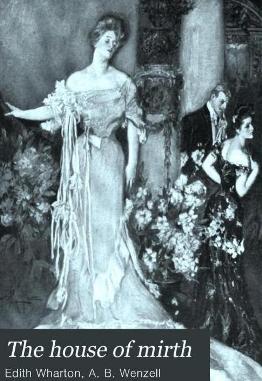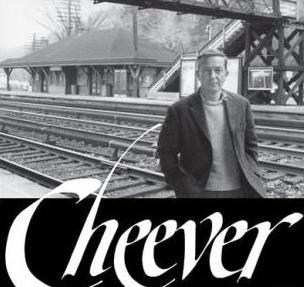- Home
- /
- UAlbany News
- /
- Release
- /
New York State Writers Institute Announces First Ten Selections of its "25 Uniquely New York Books" List
Contact(s): Catherine Herman (518) 956-8150
 |
New York State Writers Institute Fellow Lynne Tillman selected The House of Mirth by Edith Wharton as a uniquely New York book. |
ALBANY, N.Y. (November 16, 2009) -- In honor of its 25th anniversary, the New York State Writers Institute at the University at Albany has invited 25 renowned New York writers to choose a notable book about New York�State or City.
"Books that focus on New York themes and landscapes have impacted readers for generations. As the Institute celebrates its 25-year history, we think it is appropriate to draw attention to some of these books to provide a glimpse of the enormous literary traditions that this state and its authors have to offer," said Institute Director Donald Faulkner. "This is not intended to be a 'best of' list, nor have we made any attempt to rank our picks. The list represents a distinctive and slightly unconventional guide to reading more deeply into the spirit of the Empire State."
Below are the first ten selections with brief statements as to why each selector views their choice as a book unique to New York. The additional fifteen selections will be released throughout the next several months.
The House of Mirth (1905) by Edith Wharton, selected by Lynne Tillman
"Edith Wharton lived in Paris, but New York was her birthplace and psychological home, where she started writing, about which she never stopped writing. In Wharton's The House of Mirth, the interiors and exteriors of New York City and Rhinebeck resonate with the characters; they're never just settings for encounters. As few other protagonists in literature, Lily Bart's entanglements, and the consequences of her actions, are implicated, and doomed, by the rooms, buildings, and streets she frequents. Wharton�s first love was architecture and design. She created work that stands as magnificently as Grand Central Station, where The House of Mirth begins."
Time and Again (1970) by Jack Finney, selected by Lydia Davis
"What is extraordinary about the experience of reading this 1970 time-travel mystery story, a minor classic, is the patience and persuasiveness with which the narrator evokes, with his 20th-century eye, New York City as it was in 1882. His experience of entering that past time with his modern culture intact is so utterly believable, because it is so meticulously detailed. It actually teaches one how to stand in any landscape of the present and "see" a past version that in a sense has not disappeared but merely underlies the present and is accessible with enough effort of the imagination. After I read it, not only was the city changed for me, but all other landscapes as well, because the book had changed my way of looking and imagining."
Howl and Other Poems (1956) by Allen Ginsberg, selected by Ed Sanders
"Allen Ginsberg�s great "Howl," from his epoch-stirring 1956 book, Howl and Other Poems, while truly a rhapsodic long-breathed poem celebrating all of America, has many qualities that make it a New York State classic. When I first read it as a senior in high school in 1957, it seemed like a clear path to a New Holiness. I often tell those at readings that if it weren't for the great poem beginning �I saw the best minds of my generation..." I�d have settled on a job driving an Eskimo Pie truck in Kansas City. It blew through the era and it was both sacred and shocking. It revealed to an entire generation a kind of New Autobiography. It beckoned to poets, challenging them to dare to be part of the history of their era. Howl is the book that most changed my life."
Enormous Changes at the Last Minute (1974) by Grace Paley, selected by Edward Schwarzschild
�I was a nineteen-year-old pre-med university student and Grace Paley was almost invisible behind the auditorium�s podium. But I heard her voice loud and clear. She began by reading �Wants,� the opening story from Enormous Changes at the Last Minute. I was immediately, forever entranced. Early on, she mentioned a �new library� somewhere in the New York City of my dreams. I followed that tough, street-smart, vital voice long after that day and it led me to make many enormous last minute changes to my life. I set off to find Paley�s new library. Then I read and read and read.�
Seize the Day (1956) by Saul Bellow, selected by James Lasdun
�I love this book. For a long time it functioned as my own private style manual (there�s nothing to touch it for the sheer crackling brilliance of the prose), and even today its Broadway streetscapes are more real to me than anything I see with my own eyes. As for the lives unraveling in the magnificently depressing Hotel Gloriana where most of the action takes place � hapless, big-hearted Tommy Wilhelm and his coldly shrewd father; Tamkin the hypnotic charlatan � they have a scale and scope and intensity that seems, quite simply, unimaginable anywhere else but New York.�
Bronx Primitive (1982) by Kate Simon, selected by Le Anne Schreiber
�New York would not be New York without Ellis Island, and the immigrant millions who disembarked there to remake the city and themselves. Of the many classic accounts of life straight off the boat, my favorite is Bronx Primitive, Kate Simon�s rigorously unsentimental memoir of her 1920s girlhood. Its reigning virtues are clarity and candor about the physical and emotional environment that surrounded a young girl, transplanted to the Bronx from the Warsaw ghetto, a girl so lethally observant and renegade in spirit that she took pride in her tyrannical father�s epithet for her ��the silent white snake.��
 |
New York State Writers Institute founder and Executive Director William Kennedy selected The Stories of John Cheever by John Cheever. |
The Adirondacks: Illustrated (1874) by Seneca Ray Stoddard, selected by Russell Banks
"The Adirondacks: Illustrated had a significant influence on the legislation that created the Adirondack Park and was a major influence in opening the region to tourism and later economic development. It�s a story of a love affair with a region told in the form of a guide book. It imagined the northeast corner of New York State so vividly that it made the region in the public imagination a permanent part of the state. It's personal, humorous (modeled on Twain�s Innocents Abroad), informed and still a pleasure to read."
The Stories of John Cheever (1978) by John Cheever, selected by William Kennedy
"John Cheever turned the suburbs north of Manhattan into a three-ring circus where a clownish fatalism attached to most lives. He made ordinary places sacred and absurdly profane at the same time. He raced his characters through their improbable lives with such extraordinary language that the improbable became inevitable, and exquisite, and suburbia became a mythic community whose boundaries reached the ends of America. Cheever's masterpiece is his Stories, splendid proof of what a superb writer he was all his life."
Turn, Magic Wheel (1936) by Dawn Powell, selected by Rebecca Wolff
"A novel as fascinating for its flaws as for its dazzling array of successes. Skewering with vicious certainty and disconcerting prescience everything from the marketing impulses of literary publishers to the self-perceived poverty of the very rich, to the novelist�s own work of spinning fine experiences�especially of those most dear to us�into pure dross, Turn, Magic Wheel is at times lavishly overwritten, but ever in the spirit of nailing the dirty hearts of those who live (in this case in the vivid social provinces of 1930s New York City) and those who write about them."
Hardwater Country: Stories (1979) by Frederick Busch, selected by Donald Faulkner
"There are at least six collections of Frederick Busch's marvelous, spare, evocative short stories set in that broad region of landscape and imagination known as 'upstate New York.' I list Hardwater Country because it was my first encounter with a writer who should be celebrated like Chekov or Trevor. And, as each of those writers explored human nature in literary settings that became uniquely their own, Busch laid claim to those tough semi-rural places that are near-forgotten in the literature of New York. Someday there will be a 'Collected Stories of Frederick Busch' but for now I encourage any reader to wander among the fictions of Absent Friends, Don�t Tell Anyone, and Rescue Missions.
For additional information contact the Writers Institute at (518) 442-5620 or online at https://www.albany.edu/writers-inst.
----
Selectors' Brief Bios:
Russell Banks, fiction writer, previously served as New York State Author from 2004 to 2008. His novels include The Reserve (2008), The Darling (2004), a Los Angeles Times Book Award Finalist, and Cloudsplitter (1980), a finalist for the Pulitzer Prize. He lives in Keene and Saratoga Springs.
Lydia Davis, 2003 MacArthur fellowship winner and 2007 National Book Award Finalist for Varieties of Disturbance (2007), has just published her Collected Stories (2009). An associate professor of English at UAlbany, Davis resides in Columbia County.
Donald Faulkner, director of the New York State Writers Institute, is the author of two books of poetry and four critical works, including Portable Malcolm Cowley. A Danforth Fellow, he is an adviser to the PBS documentary, Paris: The Luminous Years. He lives in the Capital Region.
William Kennedy, novelist, University at Albany professor of English and founder and executive director of the New York State Writers Institute, is known for fiction set in his native city of Albany. His novels include Legs (1975), Ironweed (1983), winner of the Pulitzer Prize, and Roscoe (2002). He lives in Albany and Averill Park.
James Lasdun, poet and fiction writer, winner of the first United Kingdom National Short Story Prize (2006), is the author of the new short story collection, It�s Beginning to Hurt (2009). He lives in the Catskill Mountain region of New York.
Ed Sanders, poet, is a past winner of the Frank O�Hara Prize and the American Book Award. He is the author of the three-volume, America: A History in Verse (2000-04). He lives in Woodstock.
Le Anne Schreiber, former sports editor of The New York Times, and winner of a National Magazine Award, is the author of the memoir, Midstream (1996), a New York Times Notable Book. She lives in Copake in the Taconic foothills.
Edward Schwarzschild, fiction writer and an associate professor of English at UAlbany is the author of the novel Responsible Men (2005), a San Francisco Chronicle Best Book of the Year, and the story collection The Family Diamond (2007). He lives in Albany.
Lynne Tillman, a National Book Critics Circle Award finalist for the novel, No Lease on Life (1997), is the author most recently of the novel, American Genius: A Comedy (2006). She lives in Manhattan.
Rebecca Wolff, National Poetry Series winner for Manderley (2001), and founding editor of FENCE magazine and FENCE Books, is the author most recently of The King: Poems (2009). She makes her home in Athens, NY.
![]() For more news, subscribe to UAlbany's RSS headline feeds
For more news, subscribe to UAlbany's RSS headline feeds
Educationally and culturally, the University at Albany-SUNY puts "The World Within Reach" for its 18,000 students. An internationally recognized research university with 58 undergraduate majors and 128 graduate degree programs, UAlbany is a leader among all New York State colleges and universities in such diverse fields as public policy, nanotechnology and criminal justice. With a curriculum enhanced by 300 study-abroad opportunities, UAlbany launches great careers. For more information about this globally ranked University, visit www.albany.edu. For UAlbany's extensive roster of faculty experts, visit www.albany.edu/news/experts.shtml.


